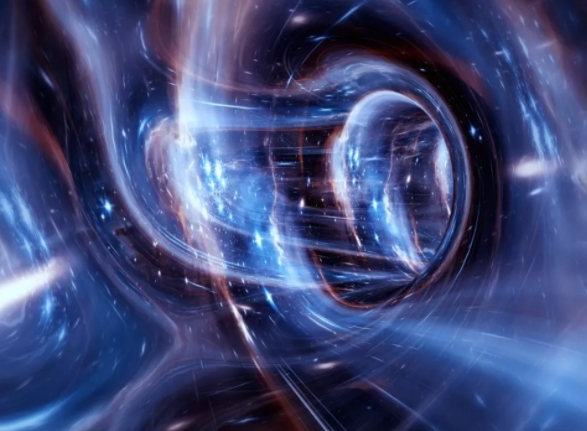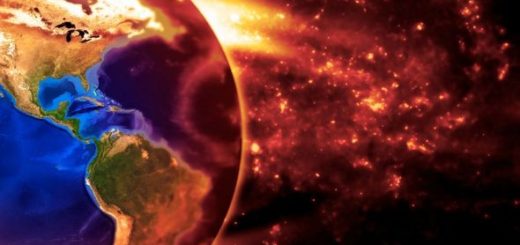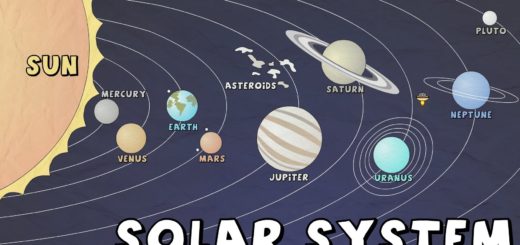How heavy is the universe? Conflicting answers hint at new physics.

Two entirely different ways of “weighing” the cosmos are producing disparate results. If more precise measurements fail to resolve the discrepancy, physicists may have to revise the standard model of cosmology, our best description of the universe.
“If this really is a glimpse of the standard model breaking down, that would be potentially revolutionary,” says astronomer Hendrik Hildebrandt of the Ruhr University Bochum in Germany.
Similar concerns over the correctness of the standard model have been raised over the past few years by two independent calculations of the so-called Hubble constant, or the rate at which the universe is expanding today. Those two measurements also disagreed, creating what has been called the Hubble tension.
The new discrepancy — called the sigma-eight tension — involves measuring the density of matter in the universe and the degree to which it is clumped up, as opposed to being uniformly distributed. The result is encapsulated in a parameter called sigma-eight. To calculate sigma-eight, Hildebrandt and his colleagues turned to an effect called weak gravitational lensing, in which the light from distant galaxies is bent ever so slightly toward our telescopes because of the gravitational pull from matter that lies between the galaxies and Earth.
Click here for more Space.com videos…
The resulting distortion is so small that it barely changes the shape of an individual galaxy. But if you take an average of the shapes of tens of thousands of galaxies in a patch of sky, a signal of weak lensing pops out. Presuming that galaxies should be randomly oriented with respect to Earth, their average shape should be nearly circular—without weak lensing, that is. But thanks to the mild distortions from this effect, the average shape instead veers toward the elliptical.
The astronomers used this signal to estimate the amount and distribution of intervening matter (both normal and dark varieties) along the lines of sight to various galaxy-rich regions across a large patch of the sky. In other words, they managed to measure matter’s cosmic density.
But doing so precisely requires one more piece of information: the distance to each individual galaxy being studied. Normally, astronomers calculate the distance to another galaxy by finding its spectroscopic redshift—the amount by which the galaxy’s light is shifted toward the longer wavelengths of the red side of the spectrum. The greater the redshift, the farther away the object.
Measuring individual spectroscopic redshifts, however, is extremely inefficient when dealing with millions of galaxies. So Hildebrandt’s team turned to something called photometric redshift, which involves taking multiple images of the same patch of sky in different wavelengths, spanning the optical and near-infrared ranges. The researchers used those images to estimate the redshift of individual galaxies in each one. “They’re not as good as the traditional spectroscopic redshift,” Hildebrandt says. “But they’re much more efficient in terms of telescope time.”
For its entire analysis, the team used high-resolution images of hundreds of square degrees of the sky (the full moon is about half a degree across) in nine wavelength bands—four optical and five near-infrared. These observations of about 15 million galaxies were collected by the European Southern Observatory’s Kilo-Degree Survey (KiDS) and VISTA Kilo-Degree Infrared Galaxy Survey (VIKING) using two small telescopes at the organization’s Paranal Observatory in Chile.
The VIKING data bolstered the KiDS data set by providing multiple observations of the same region of the sky in near-infrared wavelengths. The greater the distances of a galaxy, the higher the speed at which it is receding from us. This causes more of a galaxy’s light to be redshifted into the near-infrared range, so relying solely on optical observations is not enough. Infrared measurements capture a greater amount of the light from such galaxies, leading to better estimates of their photometric redshift.
To ensure that photometric redshifts are as accurate as possible, these observations were calibrated against spectroscopic redshift measurements of a few of the same galaxies made with the more massive eight-meter Very Large Telescope at Paranal and the 10-meter Keck telescopes on Mauna Kea in Hawaii.
Astrophysicist and Nobel laureate Adam Riess of Johns Hopkins University approves of the efforts of the KiDS researchers. “Their latest results use infrared data, which probably does a better job of tracing the mass of the lenses and getting reliable photometric redshifts,” he says.
Using the combined data, covering about 350 square degrees of the sky, the astronomers estimated sigma-eight.The value they found conflicts with a sigma-eight figure calculated using the European Space Agency’s Planck satellite’s observations of the cosmic microwave background (CMB)—the earliest observable light in the universe, which was emitted about 380,000 years after the big bang. Planck mapped the variations in the temperature and polarization of the CMB from point to point in the sky. Cosmologists can employ the map to calculate the sigma-eight value for the early universe. Using the standard model of cosmology (which says that the cosmos is made of about 5 percent ordinary matter, 27 percent dark matter and 68 percent dark energy), they can then extrapolate across more than 13 billion years of cosmic evolution to estimate the present-day value for sigma-eight.
Herein lies the tension. Hildebrandt’s weak-lensing study estimates sigma-eight to be about 0.74, whereas the Planck data provides a value of about 0.81. “There is about a 1 percent chance or so that this [tension] is a statistical fluctuation,” Hildebrandt says. Statistical fluctuations are random noise in data that can mimic actual signals and can disappear with more data. “This is not something to completely lose sleep over.”
Not yet anyway. It is also possible a systematic error lurks in the calculations of one or both of the teams. After the researchers identify any such errors, the discrepancy could go away.
Or it may not do so, which has been the case with the Hubble tension. As astronomical measurements have become more precise, the statistical significance of the Hubble tension has only grown, inflicting sleepless nights on more than a few anxious theorists.”Something very similar might happen with our sigma-eight discrepancy,” Hildebrandt says. “We don’t know.”
Riess, who leads one of the teams estimating the Hubble constant using measurements of supernovae in the nearby universe, likens the sigma-eight tension to a “little brother or sister of the Hubble tension.” That discrepancy is now considered statistically significant, with less than a one-in-3.5-million chance of being a fluke. The sigma-eight tension, with its one-in-100 chance of being a statistical aberration, is where the Hubble tension was a few years ago. “So [it is] less significant but worth keeping an eye on for a possible connection,” Riess says.
If the sigma-eight tension ascends to the same level of statistical relevance as the Hubble tension, the pressure to reevaluate the standard model of cosmology could become too enormous to ignore. At that point, cosmologists may be forced to invoke new physics to bring the Planck estimates in line with the direct measurements of the parameters of the present-day universe. “That will be the exciting alternative,” Hildebrandt says.
Potential “new physics” fixes to the standard model could involve changing the amount and nature of dark energy or dark matter—or both—as well as tweaks to how they interact with each other and with normal matter, among other more exotic modifications. “Some theoretical solutions to tinker with the cosmological model to fix the Hubble constant tension make this [sigma-eight tension] worse. Some make it better,” Riess says.
Hildebrandt agrees that there is no obvious solution in sight. “If there was a compelling model, maybe people would jump on that bandwagon,” he says. “But at the moment, I don’t think there is. It’s really on us observers to improve the significance [of the sigma-eight tension] or disprove it.”



 Creators of mankind
Creators of mankind Description of “Tall white aliens”
Description of “Tall white aliens” Where they came from?
Where they came from? About hostile civilizations
About hostile civilizations The war for the Earth
The war for the Earth “Tall white aliens” about eternal life
“Tall white aliens” about eternal life Video: “Nordic aliens”
Video: “Nordic aliens” Aliens
Aliens Alien encounters
Alien encounters The aliens base
The aliens base UFO
UFO Technology UFO
Technology UFO Underground civilization
Underground civilization Ancient alien artifacts
Ancient alien artifacts Military and UFO
Military and UFO Mysteries and hypotheses
Mysteries and hypotheses Scientific facts
Scientific facts


















